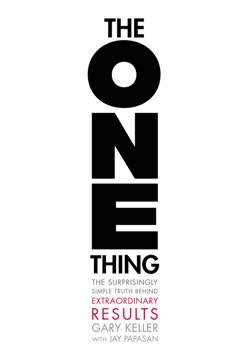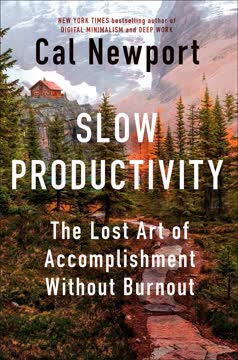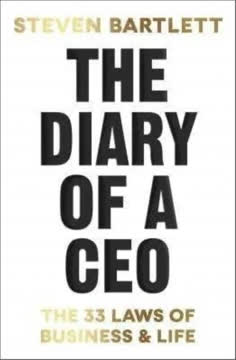Key Takeaways
1. Team habits are the invisible forces shaping workplace culture and performance
Every team has them—including yours. It's probably why you picked up this book.
Team habits are ubiquitous. They are the unspoken rules and behaviors that govern how a team works together, often invisible until they cause problems. These habits can be as simple as how meetings are run or as complex as how decisions are made. They shape the team's culture, productivity, and overall performance.
Broken habits create ripple effects. Just like a broken printer that everyone knows about but no one fixes, dysfunctional team habits can lead to wasted time, frustrated employees, and missed opportunities. These small inefficiencies compound over time, significantly impacting the team's ability to perform at its best.
Changing habits requires awareness and effort. Recognizing and addressing broken team habits is the first step towards improvement. It's not about individual performance, but about how the team functions as a whole. By focusing on habits, teams can create sustainable changes that enhance their work environment and outcomes.
2. Belonging is the foundation for high-performing teams
Belonging is what turns a group of people into a team.
Belonging creates psychological safety. When team members feel they belong, they are more likely to take risks, share ideas, and contribute fully. This sense of safety allows for honest communication, including the ability to have difficult conversations without fear of repercussion.
High belonging leads to better outcomes. Teams with a strong sense of belonging:
- Meet goals more consistently
- Have higher retention rates
- Can navigate challenges more effectively
- Experience increased creativity and innovation
Foster belonging through intentional practices. To build belonging:
- Encourage sharing of personal experiences and interests
- Celebrate diverse perspectives and contributions
- Create opportunities for informal interactions
- Ensure everyone's voice is heard and valued
- Align team actions with stated values
3. Effective decision-making requires clear processes and empowerment
Intent-based decision-making puts the onus of going through the pros and cons of the decision on the shoulders of the person who's doing the work rather than their supervisor.
Clarify decision-making levels. Establish a framework for different types of decisions:
- Decisions that can be made without informing management
- Decisions that require informing management after the fact
- Decisions that need management approval
Empower team members to make decisions. Encourage intent-based decision-making, where individuals state their intentions and rationale before taking action. This approach:
- Builds decision-making skills at all levels
- Increases autonomy and ownership
- Reduces bottlenecks in the decision-making process
Document and learn from decisions. Keep a decision log that captures not just what was decided, but why. This practice:
- Provides context for future reference
- Helps identify patterns in decision-making
- Facilitates learning and improvement over time
4. Goal-setting and prioritization drive team alignment and success
Belonging allows team members to say, "I don't feel ready for this, I don't think that we as a team are ready for this."
Set pull goals over push goals. Pull goals are intrinsically motivating and aligned with team values, while push goals rely on external pressures. To create pull goals:
- Connect goals to team members' personal motivations
- Frame goals in terms of positive outcomes rather than avoidance of negatives
- Ensure goals are challenging yet achievable
Prioritize using the TEAM framework. For each goal, consider:
- Time: How much time will it take?
- Energy: How much effort is required?
- Attention: What level of focus is needed?
- Money: What resources are necessary?
Create space for failure. Encourage calculated risk-taking by:
- Removing penalties for well-intentioned failures
- Celebrating learning from mistakes
- Balancing conservative and ambitious goals
5. Planning is everyone's responsibility and requires continuous adaptation
Plans are made to be changed; when you plan to adapt, you'll be more prepared to handle the inevitable challenges that will arise.
Distribute planning responsibilities. Encourage all team members to develop planning skills by:
- Involving everyone in the planning process
- Teaching planning techniques and best practices
- Assigning ownership of different aspects of plans
Create flexible, adaptable plans. Recognize that plans will change and build in mechanisms for adaptation:
- Use the One-Third–Two-Thirds Rule: Spend one-third of the time planning and two-thirds executing
- Apply the 85 Percent Rule: Only fill team capacity to 85% to allow for unexpected work
- Regularly review and update plans based on new information
Balance different planning horizons. Consider multiple time frames when planning:
- Leaders: Focus on quarterly, yearly, and multi-year plans
- Managers: Concentrate on monthly and quarterly plans
- Individual contributors: Plan weekly and daily
6. Clear communication is proactive, preemptive, and concise
Clarity requires courage.
Practice proactive communication. Anticipate information needs and share updates before being asked. This approach:
- Reduces anxiety and uncertainty
- Prevents bottlenecks caused by waiting for information
- Demonstrates responsibility and initiative
Be preemptive in addressing questions. Think through potential questions or concerns and address them upfront. This habit:
- Saves time by reducing back-and-forth
- Shows consideration for others' perspectives
- Increases overall clarity and understanding
Strive for brevity and clarity. Communicate concisely while ensuring all necessary information is conveyed:
- Use the Five-Sentences Rule for email responses
- Employ bullet points and subheadings for easy scanning
- Choose simpler words over complex ones when possible
Develop team-specific shortcodes. Create a shared language for common situations or requests to increase communication efficiency.
7. Collaboration thrives on defined roles and open information sharing
Open the black boxes around where work happens and how work is assigned helps reduce the cognitive overload, emotional anxiety, and general stress associated with a team's collaboration efforts.
Define clear roles and responsibilities. Use the doer-reviewer-coordinator triad to ensure all essential functions are covered:
- Doer: Executes the primary work
- Reviewer: Provides quality control and feedback
- Coordinator: Manages internal and external communication
Identify and utilize "Wolfs". Recognize team members with specialized skills or knowledge and call on them when needed:
- Encourage team members to develop and share their unique expertise
- Create a system for easily identifying and accessing these specialists
Promote transparency in work processes. Make work visible to reduce duplication and increase collaboration:
- Use shared project management tools
- Encourage regular status updates
- Create a culture of "showing your work"
8. Meetings can be force multipliers when structured intentionally
Meetings can be either a powerful force multiplier or a powerful force diminisher.
Understand the true cost of meetings. Calculate the TEAM cost (Time, Energy, Attention, Money) for each meeting to ensure they provide value.
Use meeting blocks strategically. Structure meetings using six key blocks:
- Decision-making
- Planning
- Brainstorming
- Bonding
- Review
- Update
Implement effective meeting practices:
- Always have a clear agenda and designated facilitator
- Make the default "no invite" unless attendance is necessary
- Leave time at the end to capture next steps and assign responsibilities
- Regularly audit and improve meeting structures
9. Core team habits enable individual and collective excellence
To work best in a team, individuals need to practice certain core skills.
Show your work. Make your process and progress visible to teammates by:
- Sharing how you arrived at solutions
- Presenting early drafts and prototypes
- Demonstrating tangible results regularly
Use focus blocks effectively. Schedule and protect dedicated time for deep work:
- Aim for 90-minute to 2-hour uninterrupted sessions
- Honor teammates' focus blocks as you would meetings
- Use focus blocks as a unit of measurement for project planning
Practice "Shoot, Move, Communicate". When addressing problems:
- Shoot: Take initiative to solve the immediate issue
- Move: Look for systemic solutions to prevent recurrence
- Communicate: Share actions taken and plans for long-term fixes
Embrace vulnerability and support. Create a culture where team members can:
- Openly share their weaknesses (Achilles heels)
- Ask for and offer help without judgment
- Give and receive direct, constructive feedback
10. Changing team habits requires political savvy and alignment
Team habit change is about alignment, not power.
Identify key players in the change process:
- Champion: Drives enthusiasm and momentum for the change
- Project Manager: Oversees the operational aspects of implementation
- Potential Resistors: Those who may feel threatened by or resistant to the change
Build empathy and understanding. Approach change with curiosity and respect for existing practices:
- Investigate why current habits exist
- Acknowledge the path that led to present circumstances
- Frame changes in terms of shared goals and values
Enroll teammates in the change process. Create buy-in by:
- Involving team members in shaping the new habit
- Addressing concerns and potential losses
- Finding ways for everyone to contribute to and benefit from the change
Start small and build momentum. Begin with manageable changes that demonstrate quick wins:
- Choose a specific habit within a broader category
- Set clear, achievable milestones
- Celebrate successes and learn from setbacks
Last updated:
FAQ
What's Team Habits: How Small Actions Lead to Extraordinary Results about?
- Focus on Team Dynamics: The book emphasizes the importance of team habits over individual behaviors, highlighting how effective teamwork is crucial for organizational success.
- Framework for Change: It provides a framework for understanding and changing team habits, focusing on collaboration, communication, and decision-making processes.
- Practical Strategies: Charlie Gilkey shares practical strategies and tools that teams can implement to enhance their effectiveness and foster a supportive work environment.
Why should I read Team Habits by Charlie Gilkey?
- Improve Team Performance: The book offers insights into how small changes in team habits can lead to significant improvements in overall performance and morale.
- Applicable to All Roles: It is designed for everyone in an organization, from individual contributors to senior leaders, making it relevant regardless of your position.
- Actionable Advice: Readers will find practical tools and frameworks that can be implemented immediately to enhance teamwork and productivity.
What are the key takeaways of Team Habits?
- Team Habits Matter: The book stresses that team habits are the foundation of effective collaboration and should be prioritized over individual performance.
- Belonging is Essential: A strong sense of belonging within a team enhances engagement and productivity, making it a critical focus area for improvement.
- Iterative Improvement: The author advocates for continuous assessment and adjustment of team habits, encouraging teams to embrace change and learn from failures.
What are the best quotes from Team Habits and what do they mean?
- “If you do not change direction, you may end up where you are heading.”: This quote highlights the importance of actively addressing team habits to avoid stagnation and inefficiency.
- “Poor Planning Produces Poor Performance.”: This emphasizes that effective planning is crucial for achieving team goals and that neglecting this aspect can lead to failure.
- “Belonging is the key ingredient for transforming a group of people into a high-performing team.”: This underscores the significance of fostering a sense of belonging to enhance team dynamics and performance.
What are "broken printers" in the context of Team Habits?
- Metaphor for Issues: "Broken printers" symbolize small, often overlooked problems that disrupt team workflow and efficiency.
- Impact on Performance: These issues, while seemingly minor, can accumulate and lead to significant waste and frustration within a team.
- Encouragement to Act: The author encourages teams to identify and fix these "printers" to improve overall functioning and morale.
How does Team Habits define "workways"?
- Definition of Workways: Workways are the systems created by team habits, organizational policies, and technology that dictate how work is done.
- Healthy vs. Broken Workways: Healthy workways support productivity, while broken workways hinder performance and should be addressed.
- Empowerment to Change: The book emphasizes that everyone in the organization has the power to influence and improve their workways.
What is the "Voice of No" in Team Habits?
- Critical Role: The "Voice of No" is a designated role within a team that challenges ideas and plans, ensuring that all aspects are considered before moving forward.
- Encourages Healthy Debate: This role fosters an environment where team members can express concerns and ask tough questions, which is vital for effective decision-making.
- Promotes Clarity: By celebrating the "Voice of No," teams can clarify priorities and avoid scope creep, ultimately leading to more successful outcomes.
How does Team Habits define focus blocks?
- Dedicated Work Time: Focus blocks are defined as 90-minute to two-hour periods where team members can engage in deep, uninterrupted work to enhance productivity.
- Importance of Scheduling: The book emphasizes the need to schedule these blocks intentionally, ensuring that they are protected from meetings and other distractions.
- Capacity Measurement: Focus blocks can also be used to measure a team's capacity for work, helping to determine how many projects can realistically be undertaken at any given time.
What is the "3x Rule" mentioned in Team Habits?
- Project Estimation: The "3x Rule" suggests that strategic work will often require three times more effort than initially anticipated, highlighting the need for realistic planning.
- Avoiding Overcommitment: This rule helps teams avoid overcommitting by encouraging them to assess their capacity and the true demands of new projects.
- Strategic Planning: By applying the 3x Rule, teams can better allocate resources and time, leading to more successful project outcomes.
How can I improve decision-making in my team according to Team Habits?
- Remove Bottlenecks: Identify and eliminate bottlenecks in the decision-making process to empower team members to take initiative.
- Use Intent-Based Decision-Making: Encourage team members to state their intentions rather than waiting for orders, fostering a culture of ownership.
- Keep a Decision Log: Document decisions and the reasoning behind them to provide clarity and context for future reference.
How does Team Habits suggest handling failure?
- Embrace Failure as Learning: The book encourages teams to view failure as an opportunity for growth rather than a setback.
- Create Room for Experimentation: Allowing space for failure fosters innovation and encourages team members to take risks.
- Shift Incentives: Organizations should shift their focus from punishing failure to rewarding efforts and learning from mistakes.
How can I implement the concepts from Team Habits in my own team?
- Start Small: Begin by selecting one or two specific habits to change, focusing on areas that will have the most immediate impact on your team's performance.
- Engage the Team: Involve your teammates in the process of identifying and implementing changes, ensuring that everyone feels invested in the outcome.
- Track Progress: Regularly assess the effectiveness of the changes made, using metrics to measure improvements in team dynamics and productivity.
Review Summary
Team Habits receives mostly positive reviews, with readers praising its practical advice on improving team dynamics and productivity. Many appreciate Gilkey's focus on collective habits and decision-making processes. Reviewers highlight the book's actionable frameworks, tools, and exercises for implementing positive changes in team behavior. Some readers found the content particularly valuable for managers and leaders. A few critics felt the book lacked depth or relied too heavily on subjective arguments. Overall, readers recommend the book for its fresh perspective on team building and organizational culture.
Similar Books








Download PDF
Download EPUB
.epub digital book format is ideal for reading ebooks on phones, tablets, and e-readers.





